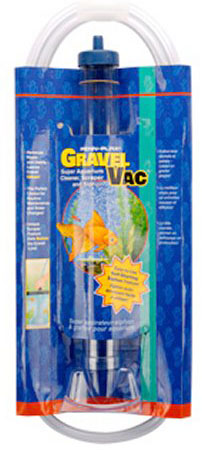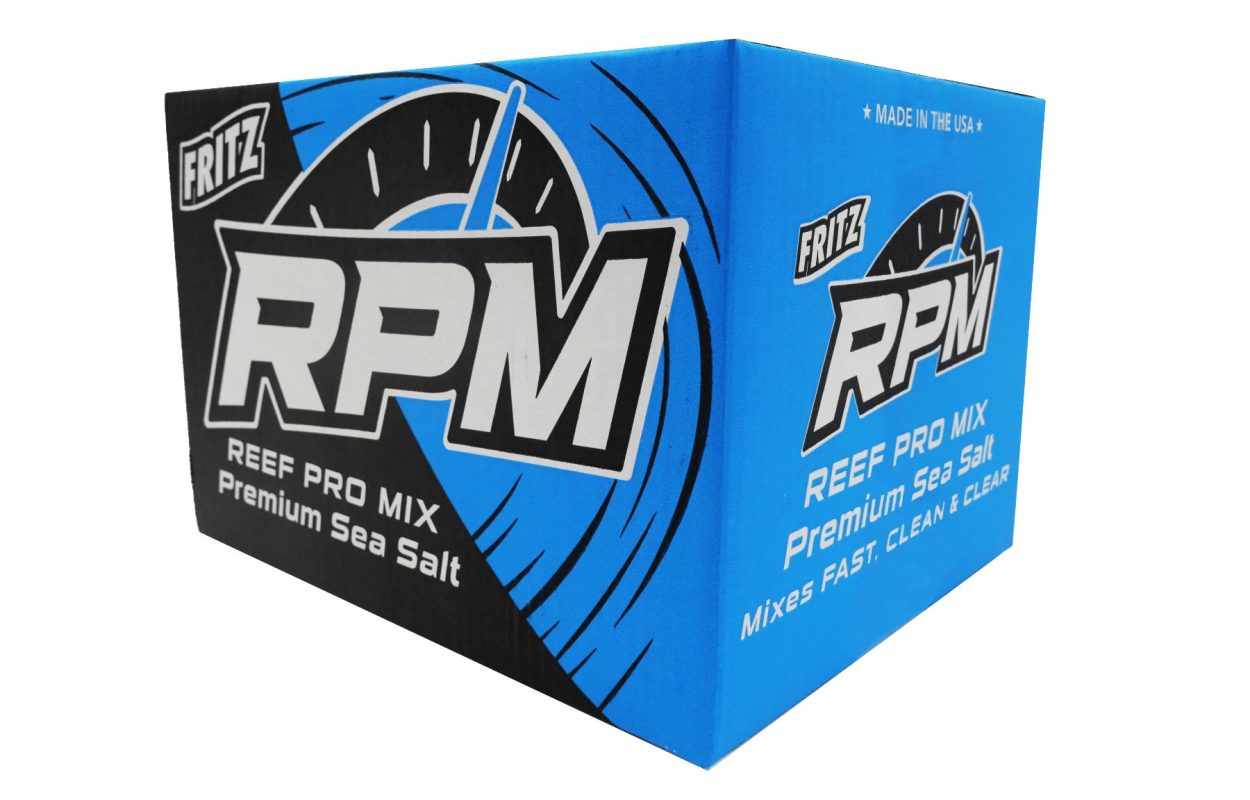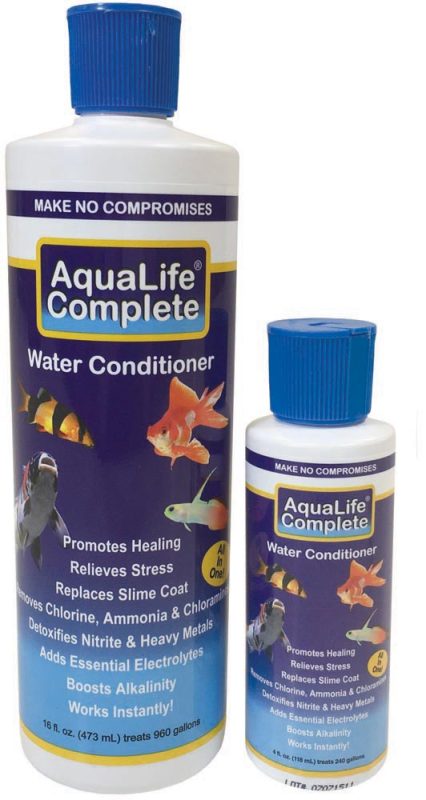11. Saltwater Aquarium Maintenance
Monthly Maintenance
Long-term success of your tank depends on regular maintenance. Regular maintenance, at least on a monthly basis, removes accumulated organic material, nitrate, sludge and fish waste, all of which can cause water chemistry problems, excess algae growth, fish stress, disease and fish death. Saltwater aquarium maintenance includes water changes and gravel cleaning as the first lines of defense against these problems.
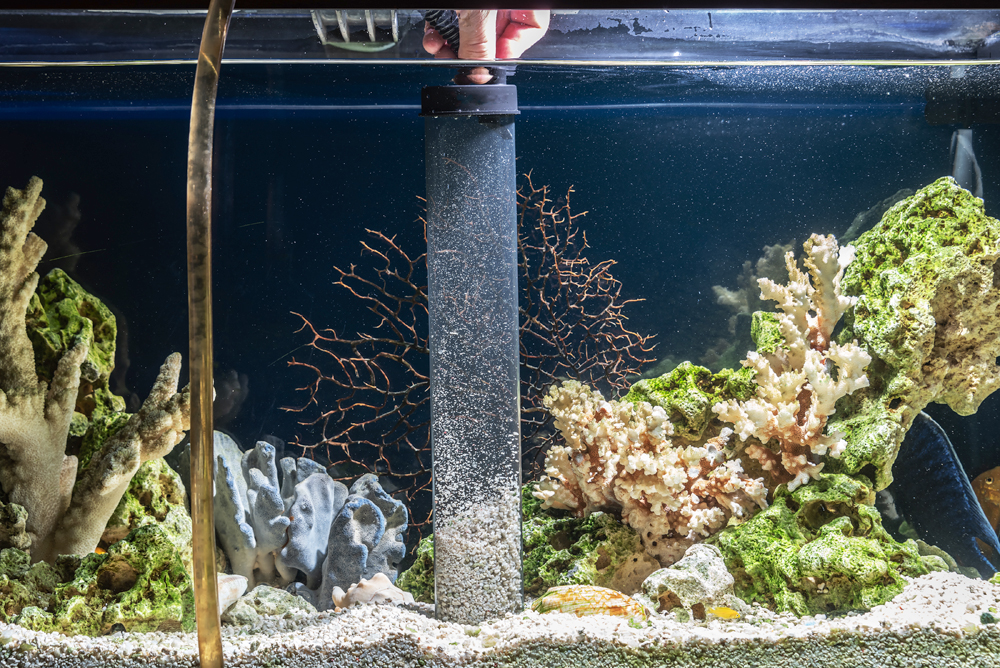
Partial Water Changes
Water changes of 10-25% of the tank volume are mandatory to maintain proper water chemistry. More frequent 10% water changes every two weeks are often even more effective, especially if the tank has had problems.
Step by Step
1) Unplug heaters, pumps, air pumps and any filters.
2) Remove ornaments that need cleaning leaving some as hiding places for the fish.
3) See Saltwater Solution 14 for cleaning corals and other decorations.
4) Clean the Gravel
Use a gravel cleaner to siphon 25% of the tank water. The gravel cleaner should be pushed down into the gravel, agitating and removing any debris. Clean the gravel in this manner throughout the aquarium and siphon any obvious debris on the gravel surface. Crimp the gravel cleaner hose to slow down the water flow and release the gravel that accumulates in the tube. Keep gravel out of the hose. This may not be possible in tanks with sand substrate. Stir the sand instead as dirty water is siphoned away.

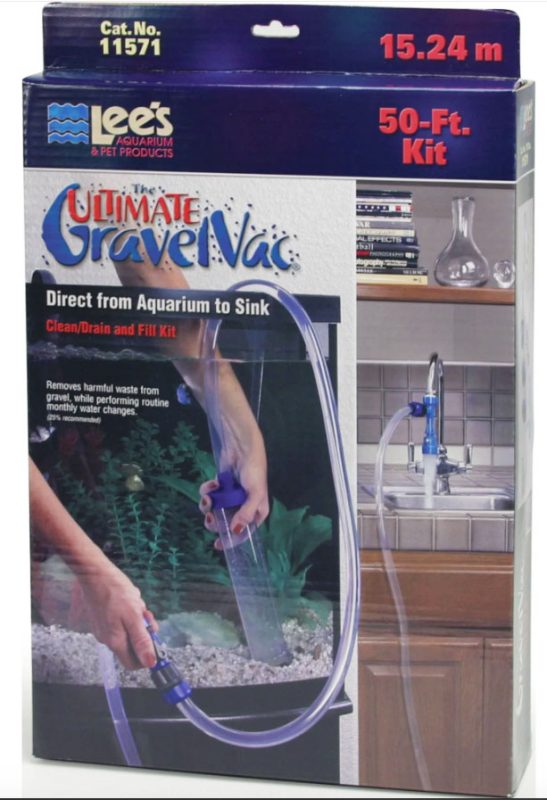
Some gravel cleaners, such as the Penn Plax Gravel Vac, have a built-in regulator to adjust the flow. Water can be drained directly into a sink with a Python or Lee gravel cleaner. Hagen gravel cleaners work well in deeper aquariums. Remember, only use buckets saved specifically for your aquarium. White buckets are great for small and medium aquariums. For large tanks, Rubbermaid Roughneck trash cans are great for moving new water to the tank or for storing reverse osmosis water.
TIP!
Rubbermaid buckets are available in sizes from 10-44 gallons and a rolling dolly is available for moving buckets to the tank. Dirty water can be pumped quickly to the drain and new water can be pumped from the bucket to the tank with a 500gph or larger submersible pump. The Sicce Utility Pump is a perfect pump for water changes.
5) Replacement water for your saltwater tank must be dechlorinated and mixed prior to refilling the tank. Use RPM Reef Pro Mix Complete Sea Salt
6) Add a high quality water dechlorinator/conditioner to the aquarium as soon as the tank is filled. aquaLife Complete is an excellent chlorine neutralizer.
7) aquaLife Pro Condition Concentrate Reef should be added to condition new water for aquariums, reef tanks, and holding tanks, when performing water changes and/or additions, and before adding new fish, corals or invertebrates, to an existing aquarium.
8) Add Activate Saltwater to help fight algae and keep gravel clean.
9) Restart filters, powerheads, heaters, and air pumps.
10) Algae covered coral can be cleaned by soaking in a solution of bleach at a ratio of 1 cup of bleach to 5 gallons of water. After the decorations are bleached to the desired color, pour out the bleach water and rinse the decorations. Soak the items in fresh water and use a quadruple dose of dechlorinator. The decorations should be soaked until all smell of bleach is gone or until the rinse water is free of chlorine.
See Bleaching Synthetic Coral and Decorations Safely for step-by-step instructions.

